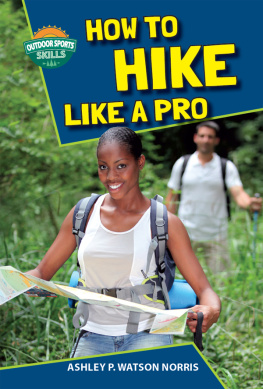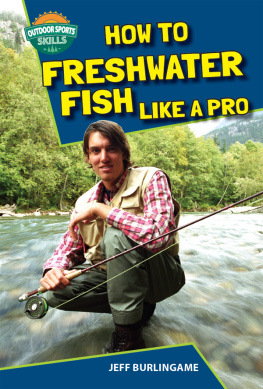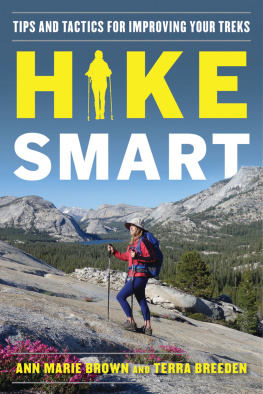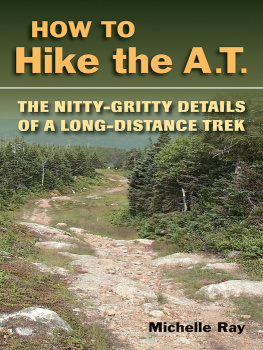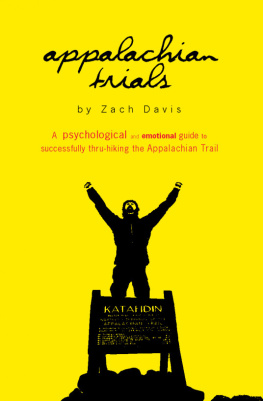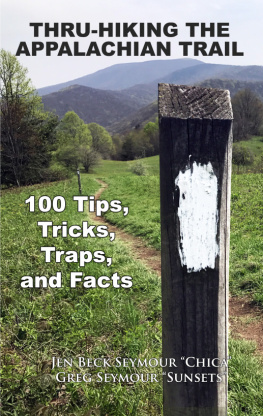A Sport and an Adventure
Would you like to explore a canyon? A forest? A valley? Hiking is a sport that can be practiced almost anywhere. But true hiking is not as simple as just lacing up a pair of boots and going for a walk. In this book, you will learn what you need to know to begin your hiking adventure. From supplies and safety precautions to plants and predators to avoid, author Ashley P. Watson Norris goes beyond the basics in this informative introduction.

Imagine walking on a dirt trail, you hear something large in the trees up ahead. You walk into a clearing and see a herd of elk. The males are nine feet tall, have huge antlers, and look strong and made to run. They glance up at you and neither of you move. After several moments they decide that you and your family arent a threat and they go back to grazing. You watch them for several minutes and take lots of photos.
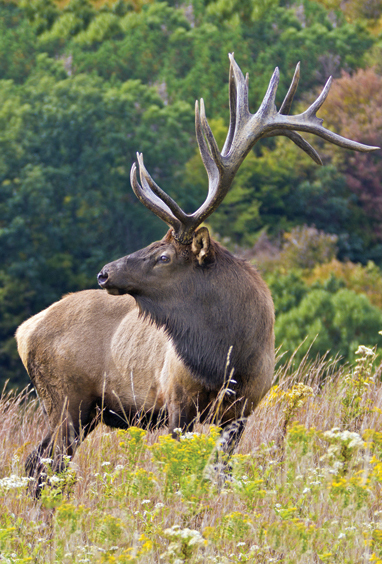
Image Credit: Shutterstock: Paul Staniszewski
Elk are just one of many animals that can be encountered on a regular nature hike.
As you continue your hike you scramble over large rocks, cross a small stream, walk through an aspen grove, and keep hiking uphill. After another hour you reach the mountain top, or summit. You step up to the cliff and enjoy the view. You can see miles and miles of forest and even your house from up here. A red-tailed hawk flies by and lands on a tree below you. Youre up super high!
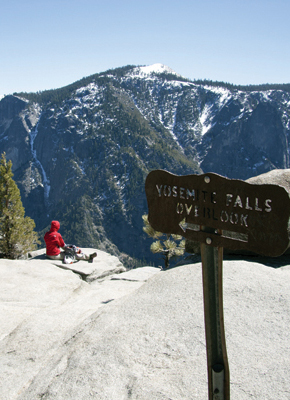
Image Credit: Shutterstock: Jody
A hiker rests at Outlook Point, Yosemite National Park, California.
At the summit you relax, drink some water, and enjoy the snacks you packed. As you start your hike back down you see that the elk are gone. But where they were you see a bunch of dark brown pebbles in a pile. After looking at your guidebook you figure out that its elk scat, or poop.
When you finally reach the car youre tired but happy. It was a beautiful day to hike. You start planning your next hike to explore a different area, maybe a canyon, beach, or valley.
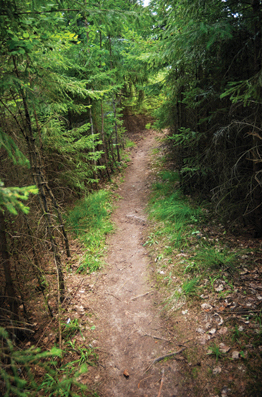
Image Credit: Shutterstock: Mikhail Olykainen
Trails within the mountains can sometimes be clear like this one, or sometimes they can be covered with much more debris.
Walking long distances for fun and exercise is called hiking. It is a sport and an adventure and can be as simple or as difficult as you choose. The path you follow can be flat, steep, or hilly. You can hike on roads, a dirt trail, or make your own trail in the forest or desert.
There is no set length of time required because hiking is about having fun. Some people hike for just a few hours and carry water, snacks, and a jacket. Other people hike for days and will carry big packs with tents, sleeping bags, lots of food, and even a book or two to read.
Find out what style of hiking you enjoy the most. Go hiking with a friend, a parent, or a hiking group. Its a great way to have fun and see wild animals, beautiful scenery, and get into nature.
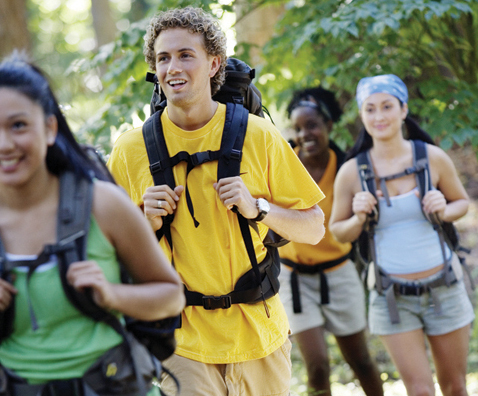
Image Credit: Shutterstock: Blend Images
Hiking with friends is a fun activity.
Hiking etiquette is the informal guidelines that lets all hikers enjoy the trail and nature but with no negative impact. Following etiquette means that the trail and wildlife will be there to see and enjoy in the future.
A popular saying amongst hikers and nature groups is: take nothing but pictures and leave nothing but footprints. It means the only thing you should take while hiking is photos. Leave what you find where you found it. Dont take any shells, rocks, plants, or animals with you. The only thing you should leave behind are footprints. This means that no trash should be left behind, even biodegradable food items such as apple cores and banana peels.

Image Credit: Shutterstock: Spectruminfo
Most trails wont have garbage cans along the way, so it is always important to bring something in which you can carry your garbage until you can dispose of trash the right way.
Uphill hikers have the right of way. If youre hiking downhill and meet hikers that are going uphill, then you should step off the path to allow them to pass. When you take a break move to the side of the trail so other hikers can pass you.
During long hikes you will probably need to use the bathroom. Pick an area more than two hundred feet away from water, the trail, and campgrounds. This will ensure that the water stays clean and that you will have privacy.
To urinate, choose a bare spot with no grass, plants, or trees. For solid human waste, or feces, dig an eight-inch-deep hole, called a cat hole, and use that as a toilet. When youre done, cover it up with dirt but dont pack the soil down. This will allow the feces, or poop, to decompose. Toilet paper takes years to decompose, so it should be put in a plastic bag and packed out.
A hike can be whatever you want. Pick the best hike for the time you have and your groups skill level. Find your options by talking to other hikers, look for hiking books, maps, and Web sites that list hikes for your area.
First decide how difficult of a hike you want. Most hiking guides separate hikes into three categories: easy, moderate, or difficult. These categories account for distance, elevation, or vertical height climbed, and the trail type.
Next decide who will be hiking. The group must go at the speed of the slowest hiker and cannot leave a member behind. The route selected must be suitable for every hiker participating.
Figure out if you want to hike for a few hours or a few days. Then determine what hiking trails in the area match what you want.
One-way trails are also common They have a final destination and then the hikers must turn around and go back the same way they came.
Study the maps or trail guides for the area you plan to hike. Those maps will help you decide where you want to start, take breaks, and the final destination of your hike.
Maps contain a lot of important information. For every hike there is an appropriate map. A trail map is all that is necessary for hiking well-used trails. It will show where to start hiking, areas of interest, distances, buildings, and roads.
For hiking off-trail you will need a topographical (to-po-graph-i-cal) map. Topographical maps allow hikers to see the shape of the land on a map. These specialized maps have lots of lines called contour lines. Contour lines connect many points of the same elevation. If you walked along a contour line you would not go higher or lower. The farther apart the lines are, the flatter the area is. The closer the lines are, the steeper the area is. Topographical maps also show other important features like railroads, mines, bridges, buildings, water, campgrounds, trails, and roads.

